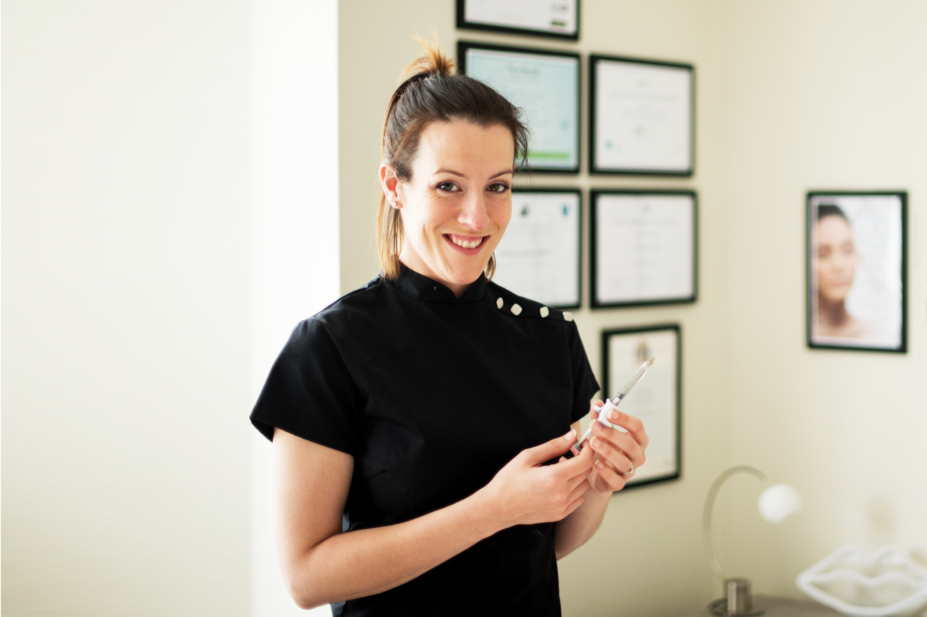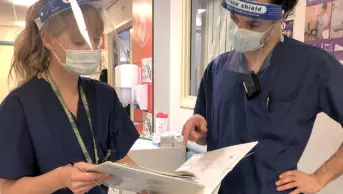
Gemma Fromage
I have worked in the aesthetics field since 2010, starting at an aesthetic pharmacy near Harley Street, London. Initially, I dispensed injectables, gave advice to prescribers and supervised pharmacy-based placement days for nurses completing their non-medical prescribing course. I now run my own clinics as a pharmacist prescriber.
Prior to 2016, pharmacists were not well supported as aesthetic practitioners and faced many obstacles with regards to training, insurance and product ordering. However, the pathway into aesthetic practice was made more accessible for pharmacists following a Health Education England report, published in November 2015, that aimed to standardise training for all practitioners who provide and deliver these services. As a result, pharmacists became recognised practitioners within the aesthetic industry. This led to a wider range of available training and insurance providers to choose from — a change that influenced my decision to complete further training and become a prescribing pharmacist.
Working within the world of aesthetic pharmacy is interesting and rewarding, allowing for flexibility and independence. My daily work varies depending on how many clients I have booked in and what writing deadlines I have.
In addition to my role in the clinic, I also write regular specialist articles for national newspapers and journals.
9:00
I typically use this time to ensure my clinic room is clean and tidy and that all consumables I need for the day, such as gloves, needles, creams and gauze, are fully stocked and available during treatments. I ensure that all information sheets, consent forms, treatment record forms and aftercare sheets are ready for the appropriate clients.
I conduct my face-to-face consultations on separate days to when I administer treatments. This allows time for a thorough consultation prior to treatment and to order in specific products. Ethically, it gives the client time to consider a treatment without feeling pressured.
9:30
My first appointment is a consultation with a woman who is enquiring about wrinkle-relaxing injections. This client wished to have two areas treated — her forehead and her ‘crow’s feet’. Knowledge of both facial anatomy and how facial muscles work is vital when injecting these areas.
Clients respond much better in consultations if they are given a clear explanation of what side effects may occur and why
Different face muscles pull in different directions, so I explain to the client that if I inject the forehead without injecting the glabella (frown lines) then there is an increased risk of a heavy brow. I find that clients respond much better in consultations if they are given a clear explanation of what side effects may occur and why.
Consultations include taking a full client medical history and giving them treatment information, including potential side effects and how they will be dealt with if they occur. This enables the client to give informed consent for any treatment received.
10:30
My second appointment of the day is a consultation with a woman in her early 20s who is interested in lip-filler treatment. I have to establish exactly what the client is unhappy about with regards to her appearance, what outcome she is hoping for and how she expects this to change her life.
It is important that I can recognise the signs of body dysmorphic disorder (BDD). People with BDD obsessively fixate on what they deem are their physical flaws, even though they are usually not noticeable to others. While BDD is primarily a mental health condition, clients tend to consult aesthetic practitioners in the belief that their issues are physical in nature. It is vital in these consultations that I do not suggest changes to a client’s appearance; instead, I give them a mirror and let them talk to me about their concerns. If after our consultation we both decide to proceed with a procedure, it is also important that before and after pictures are taken.
11:30
Next is treatment of marionette lines (the lines that run from the corners of the mouth downward) for a woman who has already attended a consultation. Following a recap of the client’s history, concerns and expectations, we commence treatment.
During treatments I always ensure I use aseptic non-touch technique to prevent microbial contamination of aseptic sites by ensuring that they are not touched either directly or indirectly
Clinic rooms are not sterile, but should be kept as clean as possible. During treatments I always ensure I use aseptic non-touch techniques. This is to prevent microbial contamination of aseptic sites by ensuring that they are not touched either directly or indirectly. Again, knowledge of facial anatomy is necessary when injecting a dermal filler. For example, knowing the location of blood vessels is imperative to avoiding serious side effects, such as vascular occlusion, which can lead to tissue necrosis.
13:30
Today I am finishing research for an article I am writing about a weight loss injection that is gaining popularity. Previously I have written about other relevant topics, such as the use of botulinum toxin in both depression and antibiotic resistance.
15:30
Before I go home for the day, I set aside time to catch up on some study.
One of the reasons I enjoy aesthetics is because it is a constantly evolving field. As such, it is important to stay up to date with my training and qualifications. However, as aesthetics is a poorly regulated sector and specific laws of who can and cannot administer injectables are not defined, there are a lot of people with limited knowledge who are currently practising. Combining this with poor injection technique can lead to serious side effects. Although some products, such as dermal fillers, do not require a prescription, any complications that arise need to be urgently treated by a healthcare professional who has the confidence and competence to manage these issues appropriately.
For this reason, I am completing my Level 7 Certificate In Injectable Aesthetics. This Master’s-level qualification will show that my skills and knowledge are above those of many others who administer injectables.
Advice to pharmacists interested in a similar role
- There are several training schools out there and the quality of teaching is variable. Ensure that you train with a reputable facility with good aftercare. There are facilities regulated by The Office of Qualifications and Examinations Regulation that allow registration with the Joint Council for Cosmetic Practitioners;
- Understand that training is ongoing and that you will not learn all the skills you need in a short period of time;
- You will need in-depth knowledge of facial anatomy. Not only does it help with treatment planning, but many risks associated with injectable aesthetics can be minimised with a good knowledge of facial muscles, vessels and fat pads;
- Consider becoming an independent prescriber. Many products used (and those needed in the case of a complication) are prescription only. If you are not a prescriber, your practice will be limited — for example you will need to practise under the supervision of a prescriber who can conduct face-to-face client consultations before writing prescriptions for you;
- Consider how you will move into the field. There are many ways that aesthetics can fit into your work life. For example, some people decide to do it only on weekends, or around their current pharmacist role. Some gradually cut down hours in alternative employment as their business grows;
- The role can be profitable as aesthetic pharmacy is predominantly a private industry; as such, you set your own prices and determine your own profit. However, while it can be profitable, an initial investment is needed initially for training, equipment, insurance and marketing your business.
You may also be interested in

‘Pharmacy plays a vital role in maintaining patient flow and efficiency of discharges’ – a day in the life of an orthopaedic pharmacist

‘Nothing compares to it’ — a day in the life of a child and adolescent mental health pharmacist
